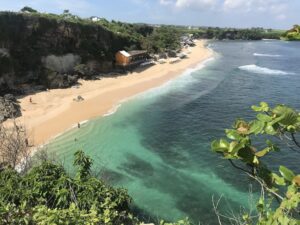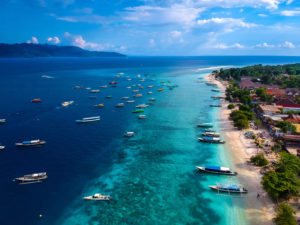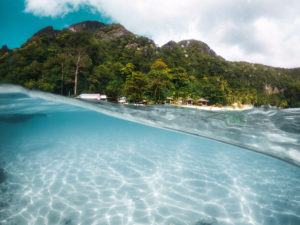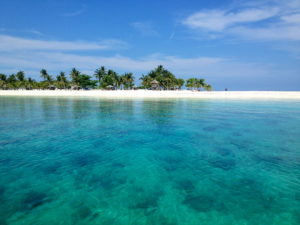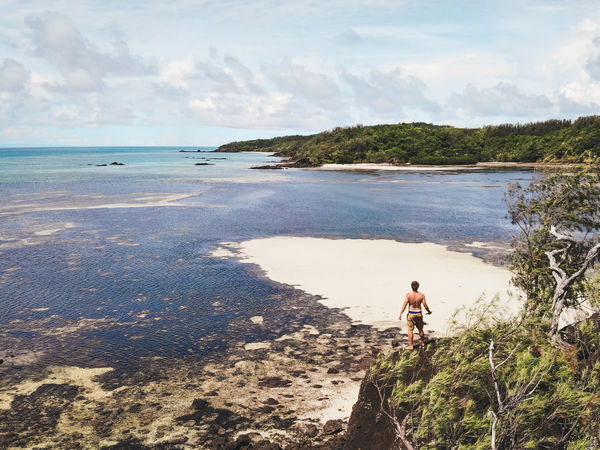Exploring Natuna Island
Hidden away from the world and out of reach of tourism discretely lies Natuna Island. This part of the Indonesian archipelago yet so far away from the majority of the country that it is actually in the South China Sea, somewhere roughly between Singapore and Borneo Malaysia.
Like other remote islands I have visited such as the beautiful Koh Lipe in Thailand, getting to Natuna Island has been a journey in itself. An early morning flight from Bangkok to Singapore, followed by a ferry crossing to the Indonesian island of Batam. An overnight stay in the rather sleepy city of Batam and a final 2 hours flight leg (the only one of the day) across to Natuna Island.
Finally stepping off the small propeller-driven plane I am hit with a blast of heat and humidity. As I was forewarned Natuna Island is a hot place. Situated only 4 degrees above the equator it is truly right in the middle of the tropical climate.

Natuna Island Culture
The culture in Indonesia is a huge contrast to the Buddhist lifestyle in Thailand where I have been living the past 3 years. Natuna Island like the vast majority of Indonesia is a heavily Muslim community.
Walking through the streets of the town I am utterly amazed by the countless quantity of mosques and frequency of the prayers throughout the day. Women here walk along the shore in headscarves as opposed to swimwear and refrigerators stock Cola and Milo in the otherwise commonplace of beer across much of Southeast Asia.
The differences make this remote island feel even more distant. It is a complete change of scenery from what I am used to. However, it is this difference of experience that I am here for.
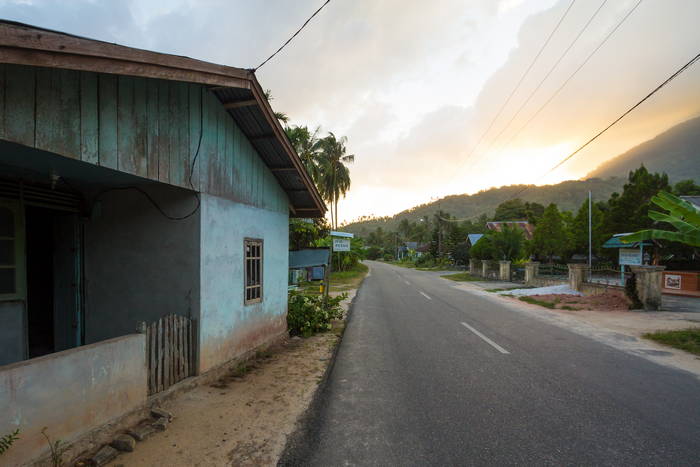
Development on Natuna Island is to say in the least, minimal. The remote island houses somewhere near 100,000 residents scattered across the land mass in sparsely distributed pockets. The entire community is electrified by diesel generators and twice daily power cuts in the morning and evening are a standard way of life.
There is a severe lack of accommodation options to be found. As for transport, the island is served by one flight per day from Batam or a once weekly three-day boat ride from Jakarta on the public ferry.
The lack of tourism, however, has resulted in this island keeping its wonderful charm of a local culture and enclaves of untouched nature that have yet to be spoiled by mass development.
Heading Out of Town
Making our way out of the town we take a 40-kilometer drive to the southern end of Natuna Island. The winding route takes us on a tour around jungle laden mountains, over cool refreshing rivers and through two building type villages.
“This is where the road and electricity ended 6 months ago” explains our local driver Urai. “It is another 8 kilometers to our landing destination,“ he continues jokingly as though he is the pilot of the small turbine plane we had stepped off only a few hours ago.
Our destination is a remote stretch of beach on the south-east end of Natuna Island. This far end of the island has white sandy beaches stretching for kilometers, unobstructed by human development. The coast is lined by thick green forest and sprawling sandy grasslands with the backdrop of a steep mountain range. An idyllic place to spend the summer days laying back on the sand in solitude.
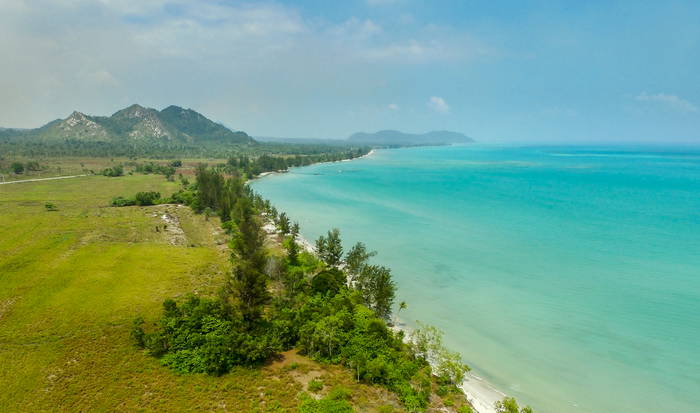
The Local Indonesian Eats
Later that the afternoon we feast on an Indonesian style lunch by the town center. Not knowing what to order, or how to read the Bahasa menu for the matter, I go by a recommendation for the classic Mi Goreng Spesial Fried Noodles with Omelette and a hot cup of red tea.
For dessert, I notice a sign on the wall displaying a ball of ice cream and the words Ice Cream Goreng. This turns out to be a deep fried sandwich pocket stuffed with ice cream and covered in a generous amount of chocolate sauce, a pretty damn good dessert I have to admit.
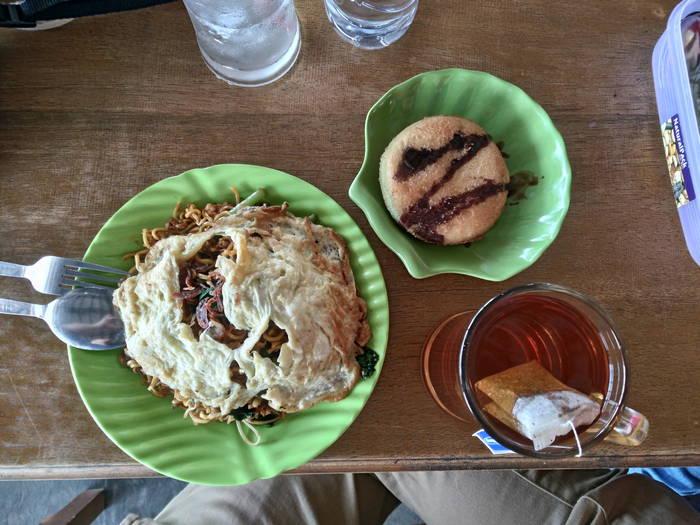
As the afternoon arrives, I walk up the mountain with my camera gear to catch a vibrant sunset. The thick jungle hangs onto to the mountain. below the ridge. There are only a couple of small timber huts scattered about the place.
No large hotels, resorts or shopping centers. It makes me realize just how off-the-beaten-track Natunua Island really is.
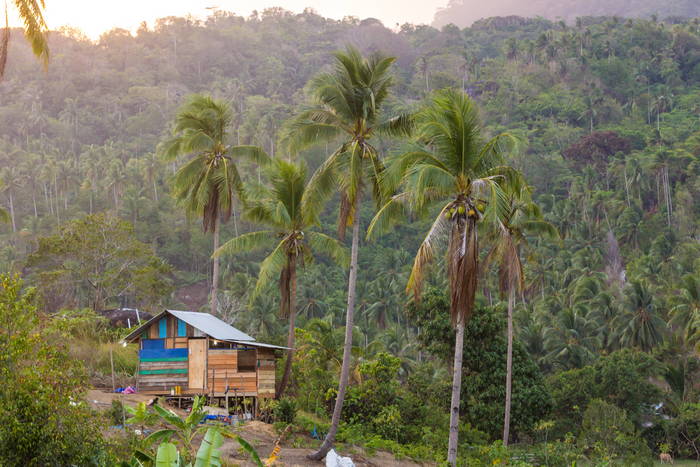
Perhaps it is the sheer distance, the strong difference in culture, the cost of transport or simply the lack of tourism focused advertising that leaves Natuna Island as an undeveloped remote land. Nevertheless, it is a beautiful tropical island which I doubt will be seeing a mass stream of tourism anytime in the near future.
How to Get to Natuna Island
Natuna Island can be reached by a 2-hour flight departing Batam, Indonesia. Flights are once daily and cost roughly USD 150 each way. Planes fill up to capacity quickly with the locals traveling to and from the island so consider booking in advance.
Natuna Island can also be reached by passenger ferry which takes 3 days travel time departing Jakarta. The service runs only once weekly.
Accommodation on Natuna Island
There are only a few hotels on Natuna Island. All are around the town of Ranai. It’d be nice if there were some small hotels on the south coast, but they don’t seem to exist. If you are looking for a place to stay then consider the following three options:
- Alif Stone Park
- Putri Indah
- Sunrise Guesthouse



